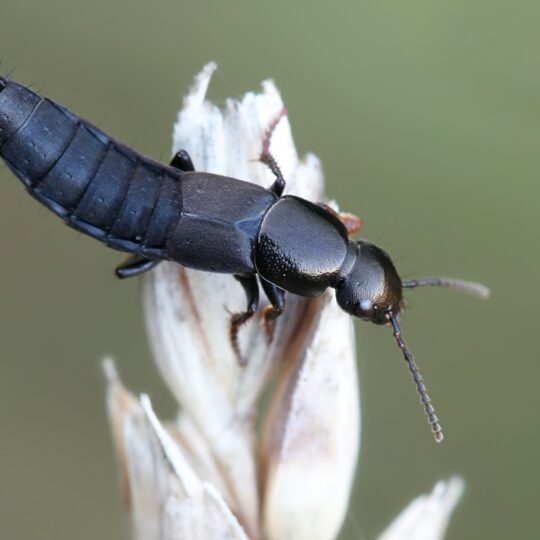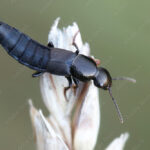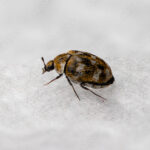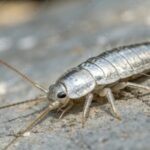How Worried Should I Be if I See a Bug I’ve Never Seen Before in My Home?

The pest control world is filled with many common bugs. Ants, spiders, cockroaches, flies, bees – most of the time we see a bug, we’re basically familiar with what it is, no matter how much we actually know about the pest itself. In other situations, we may see pests we’re loosely familiar with, but maybe we did not know exactly what they looked like. These include things like house centipedes, termites, and some types of wasps.
But, typically, the same pests you see indoors are pests you see outdoors, and we’re taught about what ants and spiders and many other bugs are at a very young age.
Every once in a while, however, we come across a pest that is unfamiliar – one that we have never seen before. When that happens, it can be a bit strange, and it’s not uncommon to have a host of questions:
- Is this [dangerous pest] I’ve heard about?
- Does this pest mean that I have some type of infestation?
- How did this pest get in and can it bite/sting/etc?
Some insects are benign and incidental. Others may indicate a structural issue, sanitation problem, or active infestation that requires attention.
While not every new insect sighting should cause alarm, there are cases where fast identification and response are warranted.
For our current customers in Virginia, if you’re ever not sure of what a pest is, just snap us a photo. We study bugs with regularity and can always help you identify what a pest is and whether or not it’s something you should worry about. If we’re concerned, we’ll also be happy to come look at it, or just proactively provide an interior treatment that can support your efforts to eliminate most of these pests.
Still, that doesn’t answer the question of whether or not you should be worried. Let’s talk about this in a little more detail.
First – Your Most Burning Question – What Might These Bugs Be?
We’re not at your house right now, and depending on whether you’re near us in Gainesville, VA, we may not even be in your time zone. So it’s difficult to answer with certainty what type of bug you might be seeing. But before we go into more detail about the next steps, let’s first talk about what the bug could be. Here are a few bugs that many people do not recognize, but still may be found in your home:
- Carpet Beetles – Harmless, but could still be a problem.
- Silverfish – Also harmless, also could still be a problem.
- Weevils – Harmless, could be an infestation.
- Rove Beetles – Not typically an infestation, can cause irritation.
- Pseudoscorpions – Harmless, can’t bite/sting, neither spider nor scorpion but looks like a small version of both.
There are also many pantry pests that it could be, although they look like beetles. Some can also be larvae of other pests. For example, fly larvae (maggots) look like little white worms.
Very few of these pests are harmful, but some – like silverfish and weevils – can indicate an infestation or trouble that may affect your property.
- Rove Beetle
- Carpet Beetle (Adult)
- Silverfish
Isolated Sightings vs. Patterns of Activity
One of the most important distinctions to make is whether you are dealing with an isolated occurrence or a pattern of repeated activity. Most homes, regardless of cleanliness, will occasionally attract a single insect indoors. This may be due to weather changes, open windows, or incidental transport on clothing or bags. Even with pest control, pests can only die if they walk through an area that has been treated AND they have been given enough time to pass away (no pest control is instant kill anymore) so seeing some random pest isn’t a surprise, even if it’s not that common.
Still, there are signals that you may have more than just a small issue, even if the pest itself is strange. For example:
- Multiple sightings in the same area over several days
- Insects emerging from baseboards, vents, or wall gaps
- Sightings of juveniles or insects in different life stages
- Presence of droppings, shed skins, or nesting material nearby
- Insect activity around food, water, or moisture-prone areas
One-time sightings – particularly near doors or windows – are often not cause for concern. But repeat activity in areas like kitchens, attics, or basements may indicate a breeding population or entry point that needs to be sealed.
What the Insect’s Behavior Can Tell You
Even if you cannot identify the exact species, observing how the insect behaves can provide useful information. Some behavioral indicators include:
- Flight Patterns – Moths or flying beetles that emerge indoors during evening hours may indicate stored product pests or seasonal breeding.
- Clustering Near Light – Insects that group around light fixtures may be attracted from outdoors or emerging from nearby cracks.
- Slow Movement and Flattened Bodies – Many crawling insects with flattened bodies (e.g., cockroaches, silverfish) are adapted to living in small crevices and may indicate indoor nesting.
- Presence Near Water Sources – Bugs in bathrooms or under sinks may be drawn to high humidity and could point to issues like drain flies or moisture ants.
- Insects on Clothing or Bedding – This requires immediate attention. Certain pests, such as bed bugs or carpet beetles, may use fabric as a habitat or food source.
Even unfamiliar bugs often follow common behavioral patterns that can help narrow down whether immediate control efforts are needed.
When Identification and Inspection Are Advised
There are specific circumstances where professional identification or a pest inspection is strongly recommended:
- You see multiple insects of an unknown type over a short period
- The insect appears in food storage, fabric, or sleeping areas
- There are visible signs of property damage (e.g., frayed fabric, chewed wood, small exit holes)
- You or a household member has developed unexplained bites, skin irritation, or allergic reactions
- You recently brought home used furniture, boxes, or materials from storage
In these cases, early intervention is often more cost-effective than waiting. Many pest species reproduce rapidly and are easier to control when addressed at the earliest stages.
How to Respond if You Can’t Identify the Insect
If you’re unsure what you’ve seen, but it does not appear dangerous or widespread, you can take several low-risk steps while you monitor the situation:
- Capture or photograph the insect for identification
- Check nearby areas (baseboards, drains, pantry) for more activity
- Seal visible gaps and repair torn window screens
- Keep food sealed and reduce standing water indoors
- Monitor for further sightings over the next 48 to 72 hours
If the insect does not reappear or was likely brought in from outdoors, further action may not be necessary. However, if activity continues or if the pest appears in areas that suggest infestation, professional assessment is recommended.
Unfamiliar Indoor Insects
Seeing a bug you’ve never seen before in your home doesn’t always mean there’s a problem. But it does warrant attention, especially if there are repeat sightings or signs of indoor activity. Early identification and monitoring are often enough to clarify whether you’re dealing with a benign visitor – or something that requires targeted intervention.
In any situation, if you’re in the Gainesville, VA area and are looking for help identifying and addressing your pests, reach out to ExtermPRO, today.


